-
 Bitcoin
Bitcoin $118300
-1.72% -
 Ethereum
Ethereum $3591
-0.69% -
 XRP
XRP $3.478
-3.53% -
 Tether USDt
Tether USDt $1.001
-0.01% -
 BNB
BNB $737.7
-0.54% -
 Solana
Solana $177.3
-2.40% -
 USDC
USDC $0.9999
-0.01% -
 Dogecoin
Dogecoin $0.2538
7.04% -
 TRON
TRON $0.3256
-0.85% -
 Cardano
Cardano $0.8332
-3.48% -
 Hyperliquid
Hyperliquid $44.80
-3.30% -
 Stellar
Stellar $0.4672
-6.09% -
 Sui
Sui $3.828
-5.98% -
 Chainlink
Chainlink $18.15
-3.41% -
 Hedera
Hedera $0.2655
-7.16% -
 Bitcoin Cash
Bitcoin Cash $517.5
-0.64% -
 Avalanche
Avalanche $23.89
-2.37% -
 Shiba Inu
Shiba Inu $0.00001519
-0.45% -
 UNUS SED LEO
UNUS SED LEO $8.973
0.13% -
 Toncoin
Toncoin $3.211
-2.54% -
 Litecoin
Litecoin $103.5
-3.58% -
 Polkadot
Polkadot $4.313
-3.90% -
 Uniswap
Uniswap $10.31
0.67% -
 Monero
Monero $325.4
-2.88% -
 Bitget Token
Bitget Token $5.049
3.51% -
 Ethena USDe
Ethena USDe $1.002
0.04% -
 Pepe
Pepe $0.00001346
-2.96% -
 Dai
Dai $0.9999
-0.02% -
 Aave
Aave $322.1
-2.93% -
 Bittensor
Bittensor $411.9
-4.70%
What is sharding in blockchain technology?
Sharding boosts blockchain scalability by splitting the network into smaller segments, enabling parallel transaction processing and reducing node workload.
Jul 19, 2025 at 11:35 am
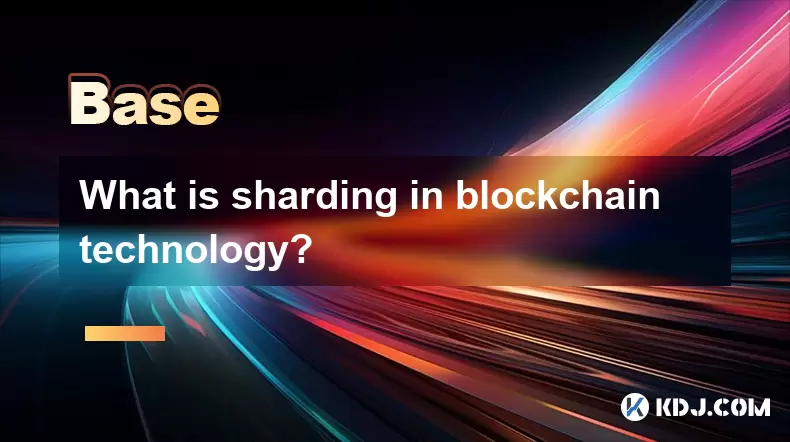
Understanding the Basics of Sharding
Sharding is a method used in blockchain technology to improve scalability and transaction processing speed. It involves dividing the network into smaller, more manageable parts called shards. Each shard contains its own data, transaction history, and smart contracts, allowing for parallel processing of transactions across multiple shards. This approach contrasts with traditional blockchains, where every node must process every transaction, leading to bottlenecks as the network grows.
The concept of sharding is borrowed from database management systems, where it is used to horizontally partition data across multiple servers. In the context of blockchain, sharding allows different nodes to handle different subsets of the network, reducing the burden on individual nodes and increasing overall efficiency. This is especially crucial for public blockchains aiming to support thousands of transactions per second.
How Sharding Works in Blockchain
Sharding operates by splitting the blockchain network into multiple independent segments. Each shard processes a portion of the total transactions, and its nodes are responsible only for validating transactions within that shard. This means that instead of every node verifying every transaction, only a subset of nodes is required to validate a specific transaction set.
To ensure security and consistency across shards, a coordination mechanism is introduced, often managed by a beacon chain or a similar structure. This central chain helps manage cross-shard communication, validator assignments, and consensus across shards. Validators are randomly assigned to different shards to prevent malicious actors from targeting a specific shard.
One of the critical aspects of sharding is how nodes are selected and rotated between shards to maintain decentralization and security. This process typically involves a randomization algorithm that ensures no single entity can control a shard for an extended period.
Types of Shards in Blockchain Systems
There are several ways to categorize shards depending on their function and implementation. State shards are responsible for storing a portion of the blockchain’s state, such as account balances and contract storage. Transaction shards focus on processing transactions, while execution shards handle smart contract execution.
Some systems implement network sharding, which divides the communication layer to reduce latency and bandwidth usage. Computational sharding is another type, where specific shards are assigned to perform complex computations such as cryptographic proofs or data indexing.
Each type of sharding has its trade-offs in terms of complexity, security, and performance. For example, state sharding can lead to faster transaction validation but may complicate cross-shard transactions if not implemented correctly.
Challenges and Risks in Sharding Implementation
Despite its potential benefits, sharding introduces several challenges, particularly in maintaining network security. Since each shard operates semi-independently, a malicious actor could potentially target a single shard with fewer nodes. This risk is mitigated through techniques like random validator assignment and cross-shard verification.
Cross-shard communication is another significant challenge. When a transaction involves multiple shards, coordination is required to ensure consistency and prevent double-spending. This often involves a two-phase commit protocol or a receipt-based mechanism, where one shard generates a proof that another shard can verify.
Data availability and finality also become more complex in a sharded system. Ensuring that all nodes can access the necessary data for validation without downloading the entire blockchain requires innovative solutions such as erasure coding and fraud proofs.
Real-World Applications of Sharding in Blockchain Projects
Several blockchain platforms have implemented or are exploring sharding to improve scalability. Ethereum 2.0 is one of the most prominent examples, planning to use a beacon chain to coordinate multiple shard chains. These shards will handle transaction processing and data availability, allowing the network to scale significantly compared to its original design.
Zilliqa is another blockchain platform that uses sharding for transaction throughput. It divides its network into shards that process transactions in parallel, then aggregates the results to finalize blocks. This approach allows Zilliqa to achieve thousands of transactions per second.
Near Protocol also utilizes sharding but with a dynamic resharding mechanism. This allows the network to adjust shard sizes based on load, improving efficiency and responsiveness to changing network conditions.
Steps to Implement Sharding in a Blockchain Network
- Define the sharding model: Determine whether the network will use state, transaction, or execution sharding based on the project’s requirements.
- Design the shard structure: Decide how many shards will exist and how they will be managed, including validator assignments and shard responsibilities.
- Implement a coordination mechanism: Develop a system for cross-shard communication and consensus, such as a beacon chain or relay system.
- Integrate randomization and security protocols: Use cryptographic randomness to assign and rotate validators across shards to prevent attacks.
- Test the system extensively: Simulate various network conditions and attack vectors to ensure robustness and reliability.
Frequently Asked Questions
Q: Can sharding be implemented in existing blockchains?
A: Yes, but it often requires a major protocol upgrade. Ethereum’s transition to Ethereum 2.0 is an example of retrofitting sharding into an existing blockchain.
Q: How does sharding affect decentralization?
A: Properly implemented sharding can maintain decentralization by ensuring that nodes only need to store and validate a portion of the network.
Q: Are all shards the same size?
A: Not necessarily. Some systems use dynamic sharding, where shard sizes can change based on network load and node participation.
Q: How is data stored in a sharded blockchain?
A: Each shard stores a subset of the blockchain’s data. Nodes in a shard only need to store and validate the data relevant to that shard.
Disclaimer:info@kdj.com
The information provided is not trading advice. kdj.com does not assume any responsibility for any investments made based on the information provided in this article. Cryptocurrencies are highly volatile and it is highly recommended that you invest with caution after thorough research!
If you believe that the content used on this website infringes your copyright, please contact us immediately (info@kdj.com) and we will delete it promptly.
- Altcoin Season Incoming? Coins Ready to Explode!
- 2025-07-19 18:30:12
- Dogecoin Price Prediction: Cup and Handle Pattern Points to Potential Breakout!
- 2025-07-19 18:50:11
- Hit the Jackpot? Brexit 50p Coin Could Be Worth £40,000!
- 2025-07-19 18:30:12
- Galactic Meme Coin Mania: Troller Cat Leads the Crypto Pack in 2025
- 2025-07-19 18:50:11
- Pi Coin, Bitcoin, and 2025: What the Future Holds, Ya Know?
- 2025-07-19 18:55:12
- TRX vs. RTX: Will Remittix Overtake Tron as the Altcoin to Watch in 2025?
- 2025-07-19 17:30:12
Related knowledge

What is the Inter-Blockchain Communication Protocol (IBC)?
Jul 19,2025 at 10:43am
Understanding the Inter-Blockchain Communication Protocol (IBC)The Inter-Blockchain Communication Protocol (IBC) is a cross-chain communication protoc...

What is the "crypto trilemma" of scalability, security, and decentralization?
Jul 19,2025 at 06:28pm
Understanding the Concept of the Crypto TrilemmaThe crypto trilemma refers to the challenge of simultaneously achieving scalability, security, and dec...
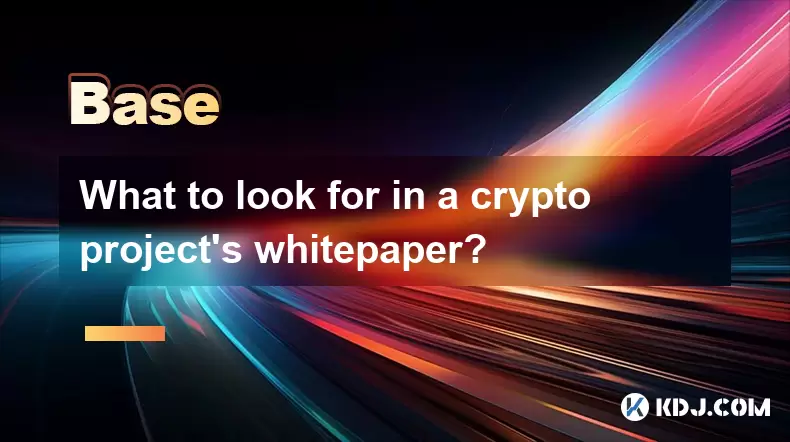
What to look for in a crypto project's whitepaper?
Jul 19,2025 at 01:42pm
Understanding the Purpose of a WhitepaperA whitepaper is a foundational document for any cryptocurrency project, often serving as the first point of c...
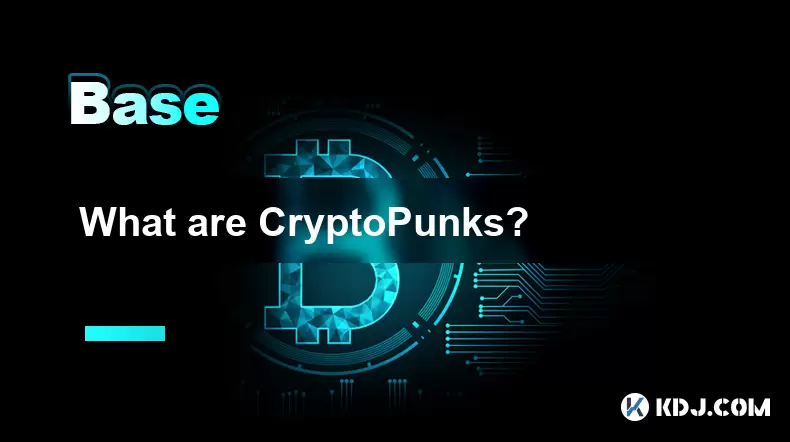
What are CryptoPunks?
Jul 19,2025 at 08:28am
Understanding the Basics of Bitcoin MiningBitcoin mining is the process through which new Bitcoin is introduced into circulation and transactions are ...
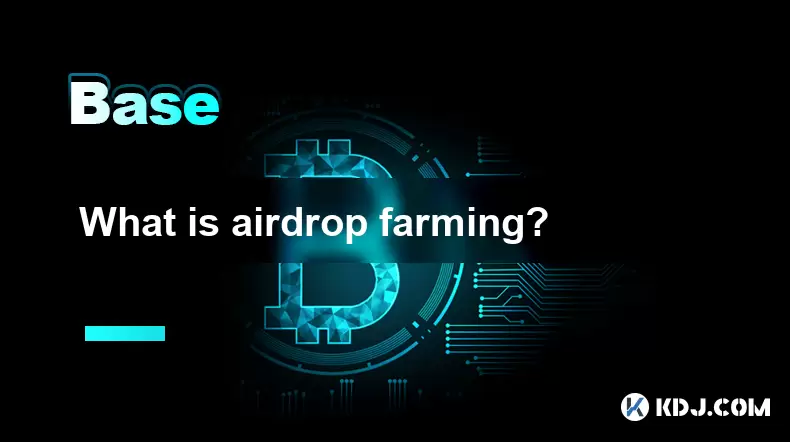
What is airdrop farming?
Jul 19,2025 at 03:56am
What Is Airdrop Farming?Airdrop farming is a term that refers to the process of accumulating tokens or coins through participating in airdrops and yie...
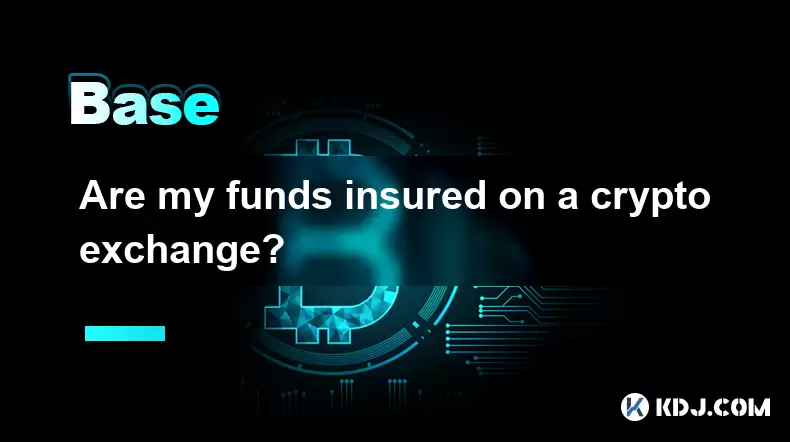
Are my funds insured on a crypto exchange?
Jul 19,2025 at 08:21am
Understanding the Concept of Fund Insurance on Crypto ExchangesWhen users store their digital assets on a cryptocurrency exchange, they often wonder w...

What is the Inter-Blockchain Communication Protocol (IBC)?
Jul 19,2025 at 10:43am
Understanding the Inter-Blockchain Communication Protocol (IBC)The Inter-Blockchain Communication Protocol (IBC) is a cross-chain communication protoc...

What is the "crypto trilemma" of scalability, security, and decentralization?
Jul 19,2025 at 06:28pm
Understanding the Concept of the Crypto TrilemmaThe crypto trilemma refers to the challenge of simultaneously achieving scalability, security, and dec...

What to look for in a crypto project's whitepaper?
Jul 19,2025 at 01:42pm
Understanding the Purpose of a WhitepaperA whitepaper is a foundational document for any cryptocurrency project, often serving as the first point of c...

What are CryptoPunks?
Jul 19,2025 at 08:28am
Understanding the Basics of Bitcoin MiningBitcoin mining is the process through which new Bitcoin is introduced into circulation and transactions are ...

What is airdrop farming?
Jul 19,2025 at 03:56am
What Is Airdrop Farming?Airdrop farming is a term that refers to the process of accumulating tokens or coins through participating in airdrops and yie...

Are my funds insured on a crypto exchange?
Jul 19,2025 at 08:21am
Understanding the Concept of Fund Insurance on Crypto ExchangesWhen users store their digital assets on a cryptocurrency exchange, they often wonder w...
See all articles

























































































